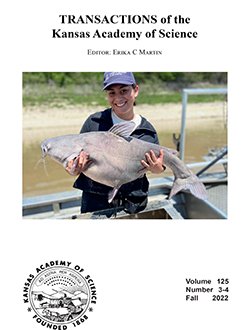A partial elasmosaurid plesiosaur skeleton (DMNH V.90000) recovered from the Juana Lopez Member, Carlile Shale of southeastern Colorado is stratigraphically unique. The contextual occurrence of the ‘Juana Lopez elasmosaur’ is rare both in terms of geologic age (late Middle Turonian) and paleoecology (littoral shore deposit). The skeletal anatomy contains diagnostic characters of an ‘intermediate’ grade of derivation although the paucity of material prevents formal naming of a new taxon. Another partial elasmosaurid skeleton (UNSM 50134, also known as the ‘Holyrood elasmosaur’) from the Lincoln Limestone (Middle Cenomanian), Greenhorn Limestone of central Kansas is similarly unique in terms of context. The ‘Holyrood elasmosaur’ also occurs in littoral shore deposits and possesses a unique suite of plesiomorphic characters previously undocumented within Elasmosauridae of the Western Interior Seaway. Dimensional data for vertebrae and appendicular elements leads to a refined generalization that there are minimally three lineages of elasmosaurids present in the Western Interior Seaway; a plesiomorphic group (equidimensional mid-cervical centra, elongate podials), a group intermediate in morphology (elongate mid-cervicals, equidimensional podials), and a derived group (highly elongate mid-cervicals, foreshortened podials). The plesiomorphic group is represented by UNSM 50134 (Holyrood elasmosaur), a new genus and species described herein (Plesioelasmosaurus walkeri, gen. et sp. nov.). Gastroliths are present with both specimens, reinforcing the prevalence of silicic stones routinely occurring within elasmosaurid partial skeletons, and the link of elasmosaurid ecology to nearshore environments. Shared plesiomorphic limb traits among early (Cenomanian) representatives of both elasmosaurid and polycotylid lineages may serve as an indicator of shared heritage (Xenopsaria) and subsequent convergent evolution of foreshortened limb elements.
How to translate text using browser tools
3 November 2022
Washed Ashore – New Elasmosaurid Specimens (Plesiosauria: Sauropterygia) from the Late Cretaceous of Colorado and Kansas and Their Bearing on Elasmosaurid Lineages of the Western Interior Seaway
Bruce A. Schumacher,
Michael J. Everhart
ACCESS THE FULL ARTICLE
<
Previous Article
|
Carlile
gastrolith
Greenhorn
Plesioelasmosaurus walkeri





